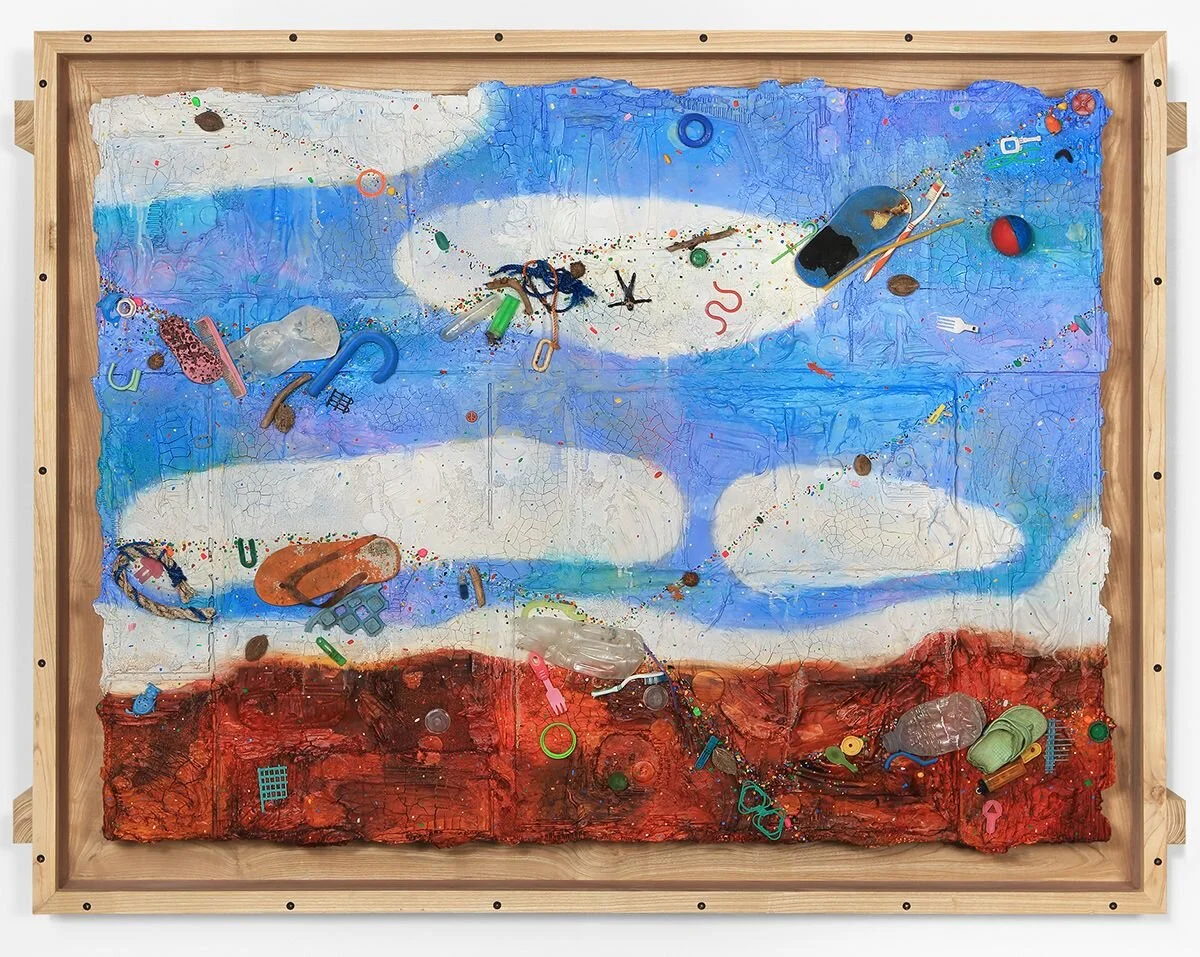Roni Horn
“Recent Work'“
New York, 22nd Street
Drawing has been a defining element of Horn’s artistic practice since the 1980s. With ‘Recent Work,’ she will debut one of her most ambitious works on paper to date, the monumental installation of ‘LOG (March 22, 2019 – May 17, 2020)’ (2019 – 2020). Displayed as a series of over 400 individual sheets of paper, it contains a sequence of casual handwritten notes, observations, facts, quotes, original texts, news, collages, drawings, photographs, and lists created daily over the course of fourteen months. Horn would describe the events of weather, private life, and anything notable that came to mind or hand each day. One page is inscribed with quotations from Emily Dickinson and Mae West, while another features a pasted in photographic self-portrait of the artist above handwritten idioms such as ‘I could cry my eyes out’ and ‘laugh my head off’.
Toni Horn Wits’ End Mash (Elvis has left the building), v.1, 2019 Individually silkscreened idioms. Original texts handwritten, authored by app; 300 people; silkscreen on paper (Hahnemuhle roll, 305 grms); up to 50 colours 132.1 x 162.6 cm 52 x 64 inches © Roni Horn. Courtesy the artist and Hauser & Wirth. Photo: Ron Amstutz.
In the artist’s Wits’ End Mash series, Horn’s use of image and language as subject matter acquires new potency. For these large-scale drawings, Horn has individually silkscreened approximately 300 handwritten sayings to overlap en masse on single sheets. Arcane phrases and common aphorisms – ‘Rome wasn’t built in a day,’ ‘happy as a clam,’ ‘Elvis has left the building’ – collide in up to 50 colors, their legibility obfuscated in ways that reveal the mutability of their meanings. To source these phrases, Horn surveyed acquaintances and strangers to assemble a catalogue of clichés and idioms.
“Recent Work’ also spotlight’s Horn’s Yet series, in which drawings composed with graphite and powdered pigment become ‘plates’ that the artist dissects, splices, and reassembles into final compositions. In such works as ‘Yet 10’ (2017/2020), this process is visible in the way pencil marks, numbers, and words are interspersed between shards of color blocks and Horn’s annotations in the joining of plates within each drawing. Having first undertaken this unique pigment process in the early 1980s, Horn continually redefines the ways in which it can be used to lend physicality and depth to the practice of drawing.







